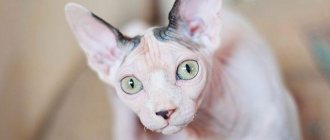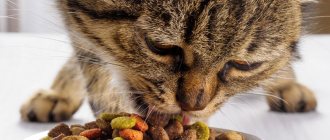Hamsters have always been popular to keep at home, especially when there are children in the house. They are easy to maintain and do not require special care. Among the advantages, we can note the low price, you need little space for keeping, and you don’t have to walk the hamster. The downside is the hamster's short lifespan , as well as the presence of an unpleasant odor from the cage when it is rarely cleaned.
On average, hamsters live only 2-3 years; rare individuals can live up to 5 years. A hamster that lives 4 years is considered a long-liver. As is often the case in the animal world, large individuals are able to live slightly longer than their small counterparts.
The lifespan of hamsters depends on several factors:
- species (breed);
- animal size;
- diet;
- conditions of detention;
- animal care;
- physical activity;
- genetics.
What shortens the life of hamsters:
- stress;
- diseases.
In nature, hamsters live somewhat shorter than at home, on average 1.5-2 years. Low life expectancy is associated with lack of food, attacks by predators, unfavorable weather conditions, and diseases. Hamsters often die while still young. It is the baby hamsters that are very vulnerable and are often attacked by predatory animals. Under favorable conditions, a large wild hamster can live up to 5 years.
Such a low life expectancy of hamsters is associated with a fast metabolism and susceptibility to disease and stress. The body of a small animal is not able to resist diseases and the animal often dies.
Life expectancy depending on the type of hamster
The hamster family includes 19 species (only 12 of them are found in Russia). On average, hamsters live 2-3 years, but depending on the species, this figure may decrease or increase.
| Species name | Description | Lifespan |
| Syrian | Fur color: golden, white, black, brown, silver. Length: up to 12 cm. Weight: up to 125 g. They feed on seeds, nuts, and can also feed on insects (ants, flies). The female's gestation period is about 16 days. The number of cubs in a litter is on average 8-10, in exceptional cases it can reach 20. Peaceful and sociable. | How many years do Syrian hamsters live? There is a whole article related to this. But in general, Syrian houses last from 2 to 4 years. In the wild, up to 3 years, but rather less due to the fact that hamsters are easy prey for winged predators |
| Brandt | Coat color: earthy brown on the upper body; ash gray on the lower part of the body; All animals of this type have a black spot on the chest between the front legs. With the arrival of winter, the color of the fur fades; in summer, the colors become brighter. Length: up to 19 cm. Weight: up to 300 g. Active at night. Brandt's hamster is a loner by nature and rarely gets along with other hamsters. | 2 years. |
| Newton's hamster | Fur color: grayish brown; a black stripe runs from the top of the head to the middle of the back. Length: up to 16 cm. Weight: up to 150 g. They stay awake late in the evening and at night. | Up to 3 years. |
| Radde | Fur: thick, somewhat harsh in the back area. Coat color: upper part dark brown; the lower one is black or gray. There are light yellow or gray spots on the cheeks. Length: up to 29 cm. Capable of bearing offspring up to 3 times a year. They are awake at night. | Up to 3 years. |
| Dzungarian | Fur color: gray with white splashes, brownish-gray, white with gray splashes, reddish-beige; there is a dark gray stripe on the back. Length: up to 11 cm. Weight: up to 66 g. In winter, this species sheds. The female's pregnancy lasts 26 days. There can be 7-9 cubs in a litter. | Up to 12 months in favorable wild conditions; Up to 24 months at home. |
| Campbell's hamster | Coat color: wild individuals have an ash-colored coat; domestic individuals can have any color (from white to black); a dark stripe runs from the neck to the base of the tail. Length: up to 11 cm. Weight: up to 30 g. The color of the coat does not change in winter. The period of wakefulness occurs in the evening and at night. During the year they can reproduce up to 4 times. | 2-3 years at home. |
| Roborovsky's hamster | It is considered the smallest representative of this subfamily. Fur color: sandy-golden; belly white; white spots above the eyes. Length: up to 6 cm. Weight: up to 31 g. Activity - at night. The female can bear offspring up to 4 times per season (from May to September). There can be 4-9 cubs in 1 litter. They get along well in a group, so it is better to keep hamsters of 2-4 individuals in an aquarium or terrarium. | 3 years. |
| Common hamster | It is considered the largest representative of this subfamily. Coat color: black-brown or completely black; 2 light spots on the sides. Length: up to 35 cm. Weight: up to 650 g. The period of wakefulness is at night and in the evening. | Up to 3.5 years in nature and at home. |
| Chinese | Fur color: brown, ash-gray, white, brown-black. Length: up to 12 cm. Weight: up to 45 g. They get along well both alone and in pairs or groups. | At home for about 3 years. |
| Short-tailed | Color: brown-gray, without spots or stripes. Length: up to 11 cm. Weight: up to 50 g. The lifestyle can be either diurnal or nocturnal. | Up to 3 years. |
| Barabinsky | Fur color: brown; There is a dark or black narrow strip along the ridge. Length: up to 14 cm. Weight: up to 45 g. Lifestyle: nocturnal, most active in the first half of the night. They can reproduce up to 5 times a year. The number of individuals in a litter is up to 11. This species of the hamster family does not take root well in captivity; sometimes the animal can bite its owner. | In nature – 2 years; At home – 3 years. |
| Tibetan | Color: dark gray with black spots. Length: up to 10 cm. Weight: up to 38 g. They can lead a lifestyle both nocturnal and diurnal. There are up to 6 cubs in one litter. | Up to 3 years at home. |
| Long-tailed | Fur color: dark gray with a red tint; the belly is light. Length: up to 14 cm. Weight: up to 48 g. They are awake at night. They breed from March to April, and one litter can have up to 7 young. | Up to 3 years. |
| Grey | Coat color: ash gray on top; the belly and tail are white. Length: up to 14 cm. Active in the second half of the evening. A female can give birth to offspring 2-4 times a year, 5-7 cubs. | 2-3.5 years at home. |
| Hamster Sokolov | Fur color: ash gray; There is a dark narrow strip along the ridge. Length: up to 12.5 cm. Weight: up to 40 g. | There is no exact information. |
| Mongolian | Coat color: light, almost white, without spots. Length: up to 16 cm. They are active mainly in the evening and at night. In winter they hibernate. | Up to 3.5 years at home. |
| Eversman's Hamster | Fur color: brown-black, reddish-brown, gray; belly white; there is a brown spot on the chest. Length: up to 17 cm. Weight: up to 43 g. They stay awake at night. A female can give birth 2-4 times a year; there are up to 6 cubs in a litter. | Up to 3 years. |
| Kansky | Coat color: light gray; The belly and chest are white. Length: up to 18 cm. Active at night. | 2 years. |
| Rat-like | Fur color: grayish brown; ashy belly; the tail is dark brown. Length: up to 26 cm. Weight: up to 245 g. They can lead both nocturnal and diurnal lifestyles. | There is no exact information. |
Group keeping of rodents
There should not be many hamsters in the cage
If you are interested in the question of how long do hamsters live in groups at home? The answer is clear – not for long! Remember that almost all breeds of this domestic animal do not like the proximity of their fellow animals. The only exception is the mating period. In other cases, there is no point in hoping that a family or group of animals will live together for up to three years.
These pets have a special predisposition to injure and destroy each other. Sometimes the injuries are so serious that the animal simply cannot be saved and it dies at an early age.
What to look for when purchasing
Before purchasing a pet, you must make sure that all family members are not allergic to wool or to components in bedding fillers.
Age
Since rodents have a short lifespan, it is advisable to purchase young ones. The hamster must be at least 4 and no more than 6 weeks old. The best option is 4.5-5 weeks. At this age, rodents become independent. And if you buy a female, then the likelihood of getting a pregnant individual is reduced (in pet stores all rodents are in the same cage), since hamsters reach sexual maturity after 5 weeks.
Behavior
When purchasing, you should pay attention to the behavior of the animal. The pet should not stay away from other individuals, but a hamster that is too noisy and active will cause inconvenience to the owners at night.
You should pay attention to those hamsters that are awake when the buyer visits the store. If some rodents are sleeping, they should not be awakened, as these actions negatively affect the animals' nervous system. For 5-10 minutes you need to observe the behavior of awake animals. You should buy a hamster that coexists freely in a group and does not show aggression towards other individuals.
Tail and eyes
You should carefully examine the animal's eyes for purulent discharge. A healthy pet's eyes should be clear and wide open.
The hamster's tail should be dry, without abrasions or scratches on the surface.
Where to buy a hamster
The pet store creates the most favorable conditions for keeping rodents, so these establishments are best suited for purchasing pets. In addition, pet stores provide a wide selection of hamsters, and a sales consultant will help you choose an animal and tell you about the rules of keeping and care.
How do hamsters die?
Unfortunately, sometimes you have to put up with the fact that with age, every living creature grows old and dies. Fluffies die in different ways, it all depends on the cause of their death. The death of a pet can occur suddenly or due to a sluggish pathological condition. With the first option, it is no longer possible to help the animal, whereas if the pet’s well-being noticeably deteriorates, a veterinarian can provide assistance. Possible causes of death in hamsters:
- In case of poisoning, if an upset stomach occurs, the pet dies within two or three days.
- A heart attack can take the life of a furry animal instantly, but the pathological condition develops over a long period of time due to stress.
- During a stroke, the animal still lives for some time, but due to cerebral hemorrhage it is paralyzed.
- The infection lasts from several days to weeks; if treatment is not started in time, then everything will turn out fatal for the pet.
- Parasites can be present in a rodent’s body for a long time, but the more advanced the process, the less chance of recovery.
- Aging is a natural process.
What reduces life expectancy
Bathing
Bathing is contraindicated for rodents, since the animal independently removes dead particles and large contaminants. You should only bathe your hamster in water if the dirt from its fur cannot be cleaned even with a special brush.
Bathing too often can cause extreme stress in your pet. This will lead to a reduction in life expectancy.
Stress
Stress is dangerous for hamsters because constant physical and mental stress can lead to exhaustion of the body. Under the influence of stress, the hamster will become lethargic and inactive, and its appetite will worsen. Stressful situations for hamsters are:
- The proximity of a single hamster to hamsters of another species;
- the solitary existence of a hamster that gets along well only in a group;
- frequent stay in the arms of the owner;
- too rare stay in the arms of the owner;
- bathing;
- loud noise and too bright light in the room.
Diseases
Infectious diseases in hamsters can occur after contact with an infected animal and its waste products or food (water). The symptoms of infectious diseases are similar to each other, so only a veterinarian can make a final diagnosis. You should contact the clinic if your hamster exhibits the following symptoms:
- The affectionate and calm animal begins to show aggression and rush around the cage.
- The animal begins to tremble.
- Often lies with eyes closed even while awake.
- Dry or loose stools.
- Breathing becomes frequent, labored or difficult.
- The fur becomes damp and falls out more than usual.
- Discharge from the nose or eyes.
| Disease | Symptoms |
| Tuberculosis | · Lethargy; · inactivity; · lack of appetite; · cough, shortness of breath; increased body temperature; · loose stools; · hair loss. |
| Tularemia | The disease is asymptomatic, sometimes the animal can become more aggressive. |
| Listeriosis | The main signs are loss of balance and disorientation in space. When an animal moves quickly across a surface, it may suddenly lose its balance and become unconscious for a few seconds. |
| Infectious pneumonia | · Loss of appetite; increased body temperature; · cloudiness or blue tint of the mucous membranes; · rapid breathing; · nasal discharge; · conjunctivitis; · attacks of acute cough. |
| Paralysis | · Minor trembling; · refusal to eat; · inability to stand on your paws for a long time; · urinary incontinence. |
| Salmonellosis | · Immobility; · loss of appetite; · apathy; · enlargement of the abdominal cavity; · loose stools; · sudden change in body temperature. |
| Plague | · Apathetic state; · loss of appetite; · wool standing on end; · blue tint of mucous membranes. |
Why do hamsters live so short?
Regardless of how long hamsters live, a furry animal, even with ideal care, will not be able to live longer than 4 years. Nature arranges it in such a way that the smaller the animal, the shorter its lifespan. The maturation processes in decorative rodents proceed very quickly, so aging does not take long to occur either. Dwarf hamsters also have a weak point - their lungs. They are contraindicated not only from swimming and drafts, but also from being near a radiator or having too much humidity in the room.
What increases life expectancy
You should decide in advance on the place where the hamster’s cage (aquarium, terrarium) will be located. Such a place should be away from drafts and direct sunlight. The best solution is on a table or bedside table away from the window.
Food
The hamster is not an omnivore; most types of food are contraindicated for it. To increase your pet's life expectancy, you need to feed it only the following foods:
- cereals;
- millet;
- corn;
- beans;
- peas;
- nuts;
- peanut;
- dried berries and fruits;
- whole wheat bread;
- greenery;
- dandelion leaves, plantain;
- carrot and beet tops;
- sprouted grain;
- hay;
- vegetables (carrots, zucchini, cucumber, pumpkin);
- among insects - crickets;
- vitamins and minerals in tablets or drops.
The following foods can be added to your hamster's diet in small quantities:
- cottage cheese;
- eggs;
- cooked meat;
- small insects.
The following products are strictly contraindicated for use by hamsters:
- mushrooms;
- fatty foods;
- flour products;
- exotic fruits (citrus fruits, pineapples);
- onion;
- garlic;
- sweet products;
- cabbage.
The food bowl should not be left empty, otherwise the animal will start stockpiling.
Cell
The minimum cage dimensions for 1 individual should be 30 cm wide, 30 cm long and 45 cm high. A smaller cage will depress the animal; As a result, the rodent will begin to experience stress. In the cage, it is necessary to determine places for a bowl of food and water, a toilet and a wheel (if available).
The hamster's house should have good ventilation. Otherwise, the animal will experience breathing problems.
It is better to purchase a cage with metal bars and a plastic monolithic bottom. The metal structure is much easier to clean. The plastic bottom will help keep your hamster's claws safe.
Entertainment
To increase physical activity for the animal, you should additionally install a hollow wheel in the cage, inside which the rodent can run.
To allow the animal to roam freely around the apartment, you can buy a special transparent ball, inside of which there is a place for the hamster. The animal will be able to move around the apartment and explore the world around it, and the owner will not worry about the animal getting lost.
A container of sand placed in the cage will help keep the animal occupied for a long time. If you bury a piece of dried fruit or nut there, the animal will be keen on searching for a treat.
Positive emotions have a beneficial effect on the mental state of the rodent.
Cleaning
The cage must be cleaned 2 times a week. When purchasing a main cage, you should purchase an additional smaller one. In this case, the hamster can be transplanted into an additional cage for the duration of cleaning and not be afraid that the rodent will escape.
You should not use strong chemicals for cleaning, as many components can cause allergies in your pet. If the cage tray is very dirty, you can wash it with baby soap or hamster shampoo. Rinse all items inside the cage under running water and dry completely. Wipe the rods with a damp cloth.
Negative factors
Compared to the most popular pets, cats and dogs, which often live more than 10 years, hamsters certainly have a shorter lifespan.
This limited lifespan often makes owners fearful and unwilling to form emotional attachments with their pets. Some owners also underestimate the life of their hamsters, and, for example, do not show them to the veterinarian when they are sick.











